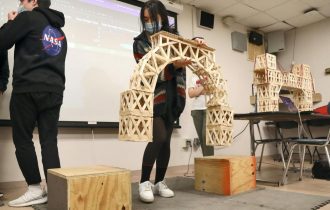Breaking the Glass Ceiling: Women in STEM
Introduction
In recent years, there has been a significant push for gender equality and inclusion in various fields. One area where this movement is gaining traction is in STEM (Science, Technology, Engineering, and Mathematics) fields. Traditionally dominated by men, the field of STEM has seen a slow but steady rise in the representation of women. This article explores the remarkable achievements of women in STEM, the challenges they have overcome, and the importance of breaking the glass ceiling to create a more diverse and innovative future.
I. The Underrepresentation of Women in STEM
Despite the progress made in promoting gender equality, women continue to be underrepresented in STEM fields. Numerous factors contribute to this disparity, including societal stereotypes, unconscious biases, and limited access to resources and opportunities. The lack of female role models and mentors in STEM further perpetuates the gender gap. However, many women have defied these odds and made significant contributions to their respective fields, inspiring a new generation of aspiring female scientists, engineers, and innovators.
II. Pioneering Women in STEM
- Marie Curie: A Trailblazer in Science
Marie Curie, a Polish-born physicist and chemist, stands as an iconic figure in the world of science. She was the first woman to win a Nobel Prize and remains the only person to have received Nobel Prizes in two different scientific disciplines. Curie’s groundbreaking research on radioactivity paved the way for advancements in physics and medicine. Her quote, “Nothing in life is to be feared, it is only to be understood,” continues to inspire women worldwide to pursue their passion for science.
- Ada Lovelace: The First Computer Programmer
Ada Lovelace, an English mathematician from the 19th century, is widely recognized as the world’s first computer programmer. She collaborated with Charles Babbage, the inventor of the Analytical Engine, and wrote the first algorithm intended for implementation on a machine. Lovelace’s visionary insights into the potential of computers laid the foundation for the digital age we live in today. Her remarkable achievements serve as a reminder of the immense talent women possess in the field of technology.
III. Overcoming Challenges: Inspiring Stories
- Katherine Johnson: Hidden Figures Revealed
Katherine Johnson, an African-American mathematician, played a vital role in NASA’s early space program. Her mathematical calculations were instrumental in ensuring the success of numerous missions, including the historic Apollo 11 moon landing. Johnson’s story, along with her colleagues Dorothy Vaughan and Mary Jackson, was immortalized in the book and subsequent film, Hidden Figures. Their perseverance and determination in the face of discrimination serve as a testament to the resilience of women in STEM.
- Fei-Fei Li: Shaping the Future of Artificial Intelligence
Fei-Fei Li, a Chinese-American computer scientist, has made significant contributions to the field of artificial intelligence (AI). She is known for her work on computer vision and the development of ImageNet, a large-scale visual database used for training AI algorithms. Li’s efforts in democratizing AI education and promoting diversity within the field have been instrumental in fostering an inclusive environment for future generations of technologists.
IV. Initiatives for Change
- Encouraging STEM Education for Girls
To bridge the gender gap in STEM, it is crucial to provide young girls with equal access to quality education in science and technology. Various organizations and initiatives, such as Girls Who Code and Black Girls CODE, are actively working to empower girls and underrepresented communities by providing them with the necessary skills and opportunities to succeed in STEM fields. By nurturing their interest and aptitude in these areas from an early age, we can create a diverse and inclusive talent pool for the future.
- Building Supportive Networks and Mentoring Programs
Establishing mentorship programs and support networks can be instrumental in helping women navigate the challenges they may face in STEM careers. By connecting aspiring female professionals with experienced mentors, these programs offer guidance, support, and valuable networking opportunities. Additionally, creating inclusive environments within organizations can help break down barriers and foster a culture of diversity and inclusion.
Conclusion
As we move forward, it is imperative to recognize and celebrate the accomplishments of women in STEM while working towards greater gender equality and inclusion. The remarkable achievements of trailblazing women like Marie Curie, Ada Lovelace, Katherine Johnson, and Fei-Fei Li serve as a testament to the immense potential and talent that women bring to the fields of science, technology, engineering, and mathematics. By breaking the glass ceiling and fostering a more diverse and inclusive environment, we can unlock new perspectives, innovative ideas, and solutions to the world’s most pressing challenges. Let us continue to inspire, support, and empower women in STEM to create a brighter and more inclusive future for all.


